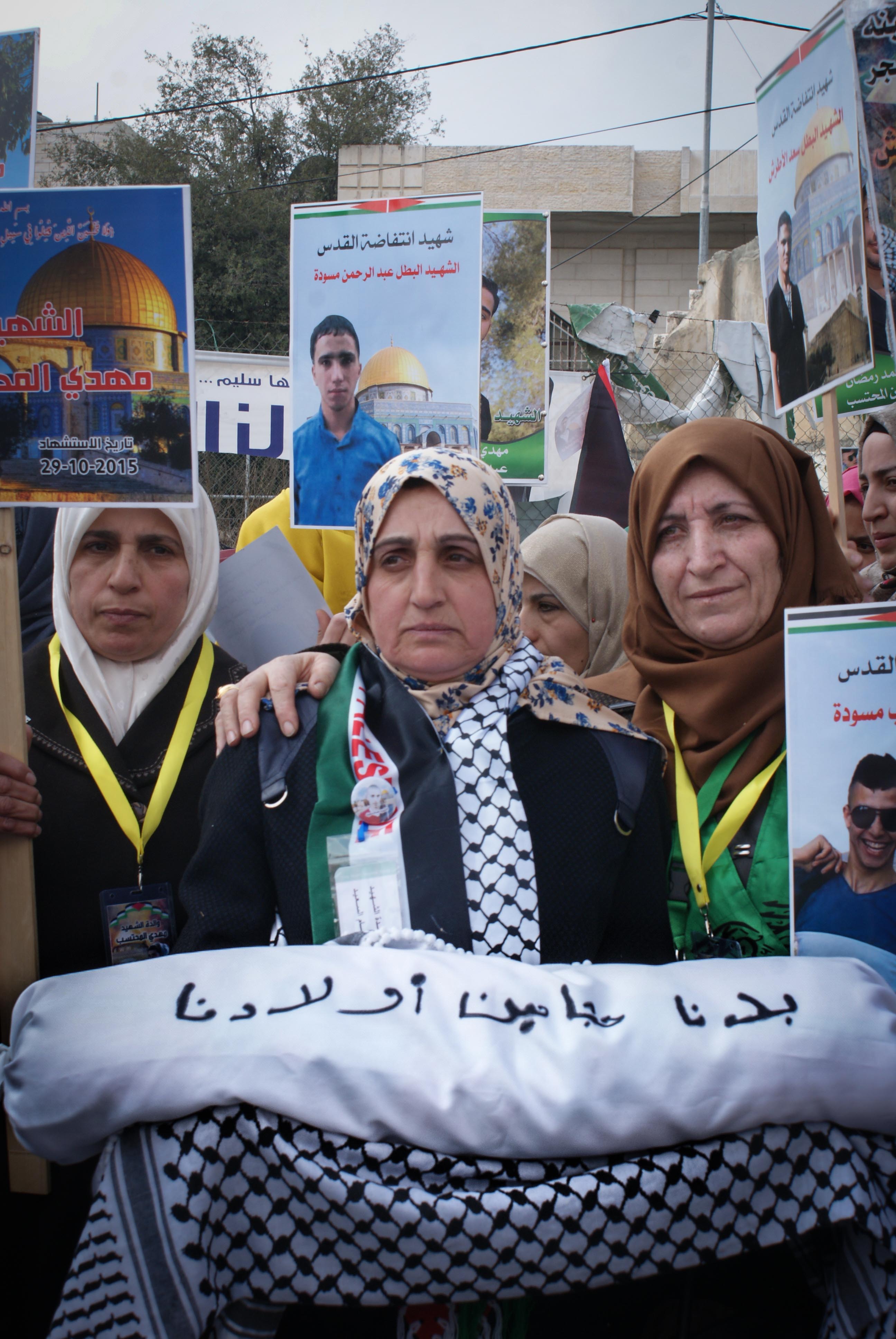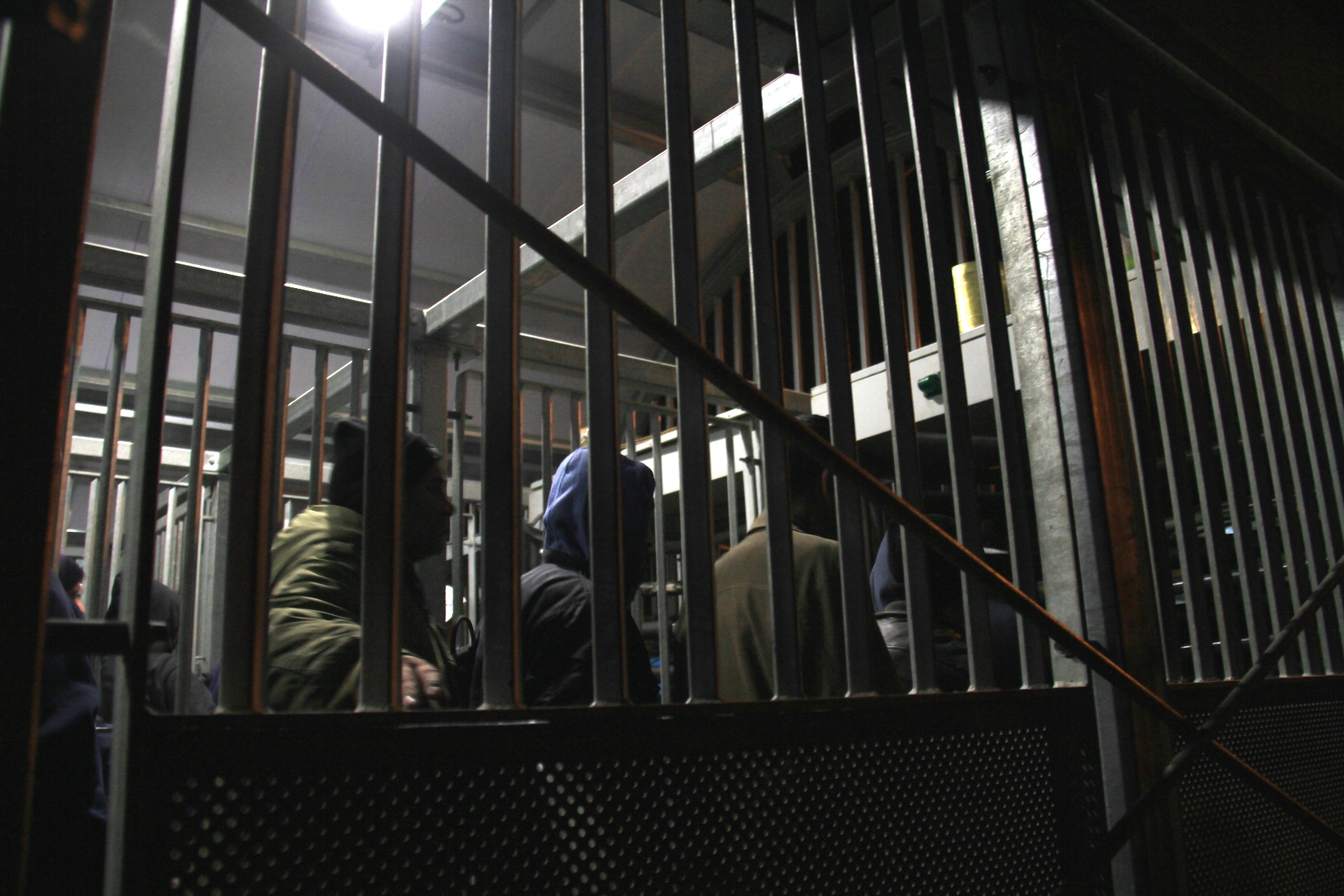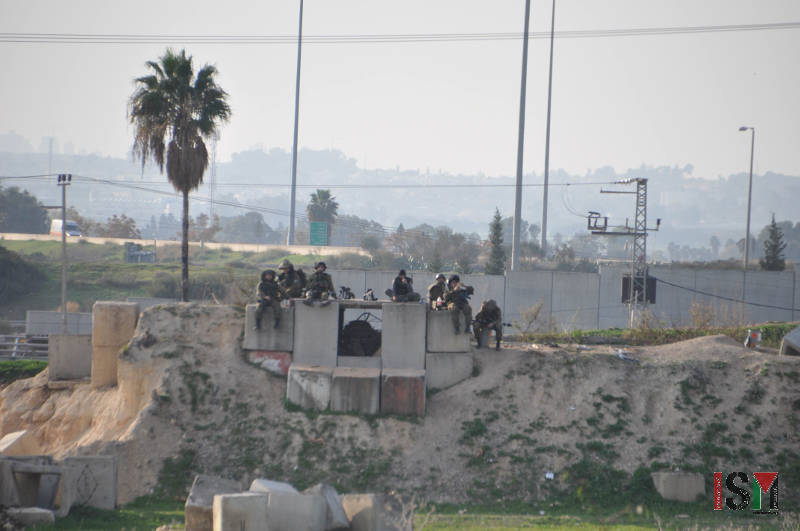Category: Features
-
“ We need our children ”
December 17th, 2015 | International Solidarity Movement, al Khalil team | al Khalil, occupied Palestine On Thursday, December the 17th, hundreds of Palestinians in occupied Al-Khalil (Hebron) gathered to protest against Israel’s policy of withholding the bodies of Palestinian martyrs killed since the beginning of October. The peaceful demonstration started at Haras Mosque and continued…
-
Palestinian workers forced to cross overcrowded checkpoint everyday
17th of December, 2015 | International Solidarity Movement, Tulkarm team | Tulkarm, occupied Palestine In the early morning of the 17th of december, Israeli security guards kept parts of the al-Tayba checkpoint closed, causing tension and frustration among the waiting Palestinian workers. Every morning, 8000 to 10 000 Palestinians have to cross the al-Tayba checkpoint,…
-
Attack on Khadouri university continues
16th of December, 2015 | International Solidarity Movement, Tulkarm team | Tulkarm, occupied Palestine Today, on the 16th of december, Israeli forces, yet again, entered the center of the campus at Khadori university, leaving several students injured. “I am so afraid! The situation here is so bad, the soldiers open fire at anybody” says a…



